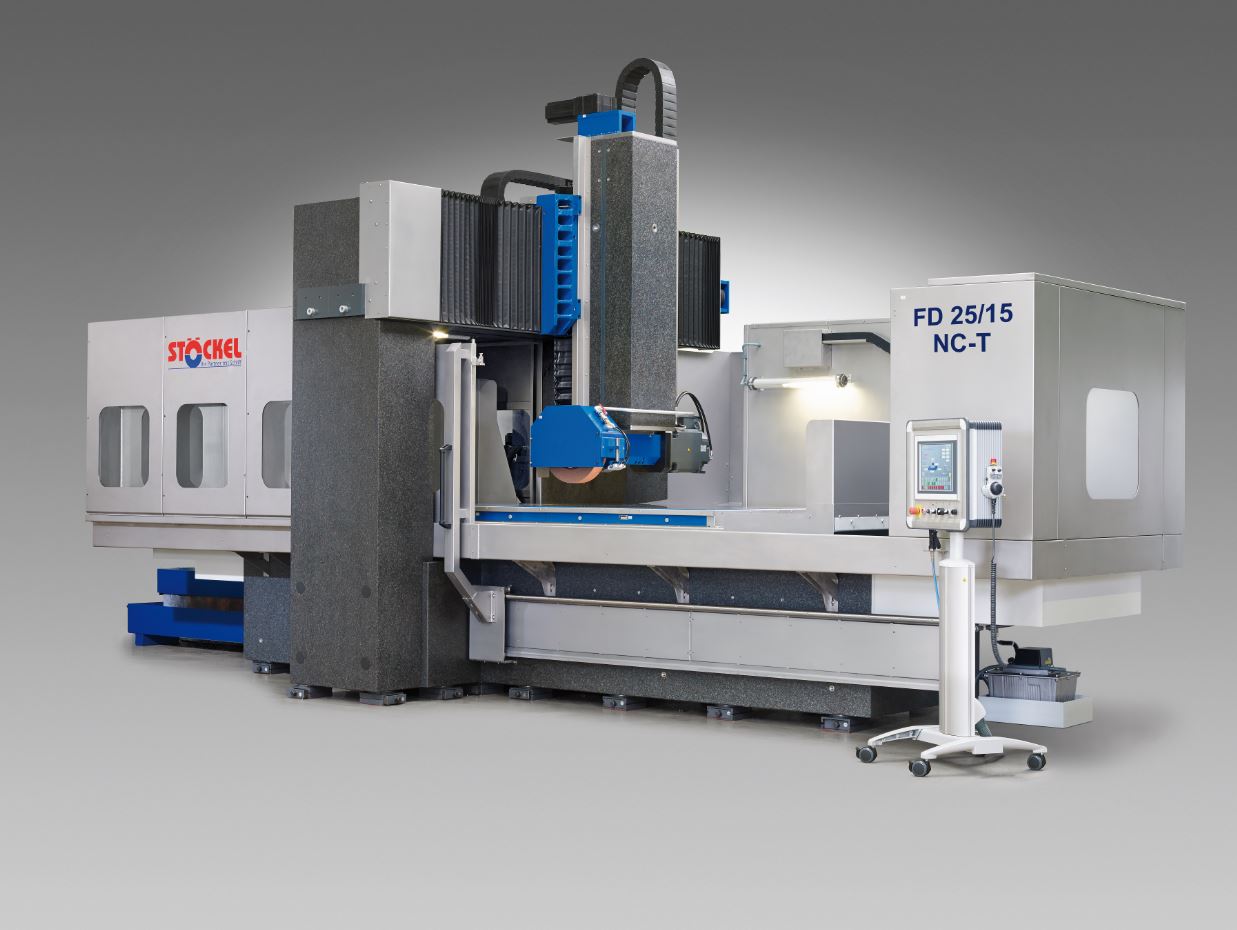Stöckel Werkzeugmaschinen GmbH in Herborn, Hessen, manufactures grinding machines for high-precision applications. In its climate-controlled production facility, 25 to 30 machines are produced per year – for a niche market that requires grinding with precision to within a micrometer (for comparison, the average diameter of a human hair is around 80 micrometers).
For maximum rigidity and temperature stability, Stöckel offers portal grinding machines in which the „portal“ that holds the headstock is made of granite. There is also a work table made from ductile cast iron, which has to measure up against the stability and precision of granite.
After working with various cast iron suppliers over the years, the company has for the past two years been purchasing its cast iron tables for grinding machines with a work area of 1200 mm to 3000 mm from Römheld & Moelle. We spoke to Managing Director Felix Kämpfer about castings with built-in precision.
Römheld & Moelle: Mr Kämpfer, could you briefly describe for us the importance of the work table in the context of the overall grinding machine.
Felix Kämpfer: Together with the granite portal and the granite bed on which it rests, the work table is the heart of the machine. It ensures that it can grind precisely and evenly across the whole work area.
In the last phase of assembly here at our manufacturing facility, each machine precision-grinds the surface of its own work table. The table has a very long service life and is only occasionally reground over the years. It must not warp, must remain absolutely tension-free and can’t have any flaws that come to light later on.
R&M: In the past you had difficulties in obtaining castings of sufficient quality. Why did it prove to be so difficult?
FK: Our demands are high. These are fairly large castings – the last work table we did with Römheld & Moelle was 2500 mm long and 1000 mm wide. It’s not easy to produce a casting of that size without internal stresses and with a very even, good microstructure. We’ve had suppliers who have delivered cast parts where the casting flaws were visible to the naked eye. There were actual holes in the table. That’s not acceptable.
Römheld & Moelle produces cast parts without residual stresses through very homogeneous, very controlled cooling in the mould. The casting quality is very high, which is really shows during machining. It’s faster and easier.
The milling is done locally by a partner and the casting quality can make a two-day difference in processing the unfinished casting.
R&M: We’re glad to hear it. What other benefits have you noticed?
FK: A very stable, good dimensional accuracy. That is of course the be-all and end-all for us. Our R&D department had already started looking at alternative materials for the work table. But the quality and dimensional accuracy that we now get from castings mean that we don’t have to look for alternatives and can stick with ductile cast iron as a material.
With the small quantities we need and with the importance the work table has for the performance of our machines, cost is much less important than quality, but thanks to the precision of the cast parts supplied by Römheld & Moelle we can actually save some money too.
For example, we can reduce milling allowances, which means fewer kilos of cast iron per unfinished casting and even faster machining. Quality does pay off.
R&M: Mr Kämpfer, thank you for your time.
More about precision grinding machines from Stöckel: www.stoeckel.de
The casting for the work table was produced using a variant of the full-mould casting process, in order to minimize combustion residue during casting. The pattern was milled from foam and used to create the sand mould. Unlike traditional full-mould casting, the foam pattern was then removed before the mould was closed, instead of allowing it to evaporate during pouring. More about full-mould casting. 

